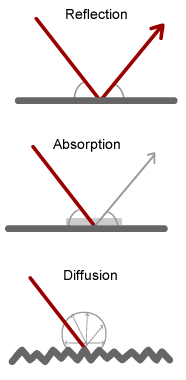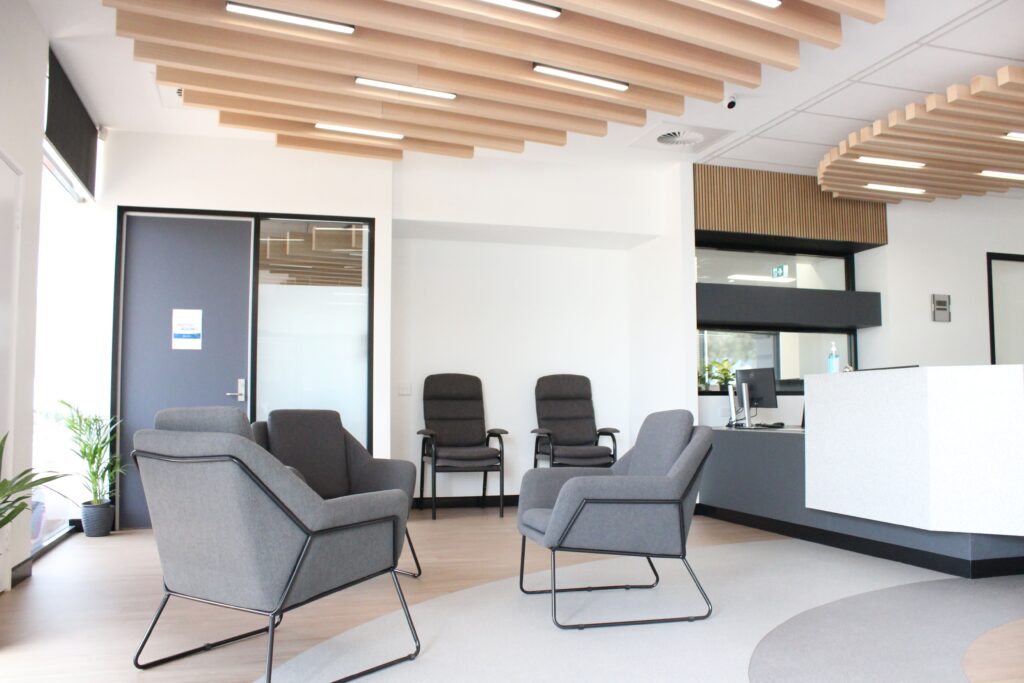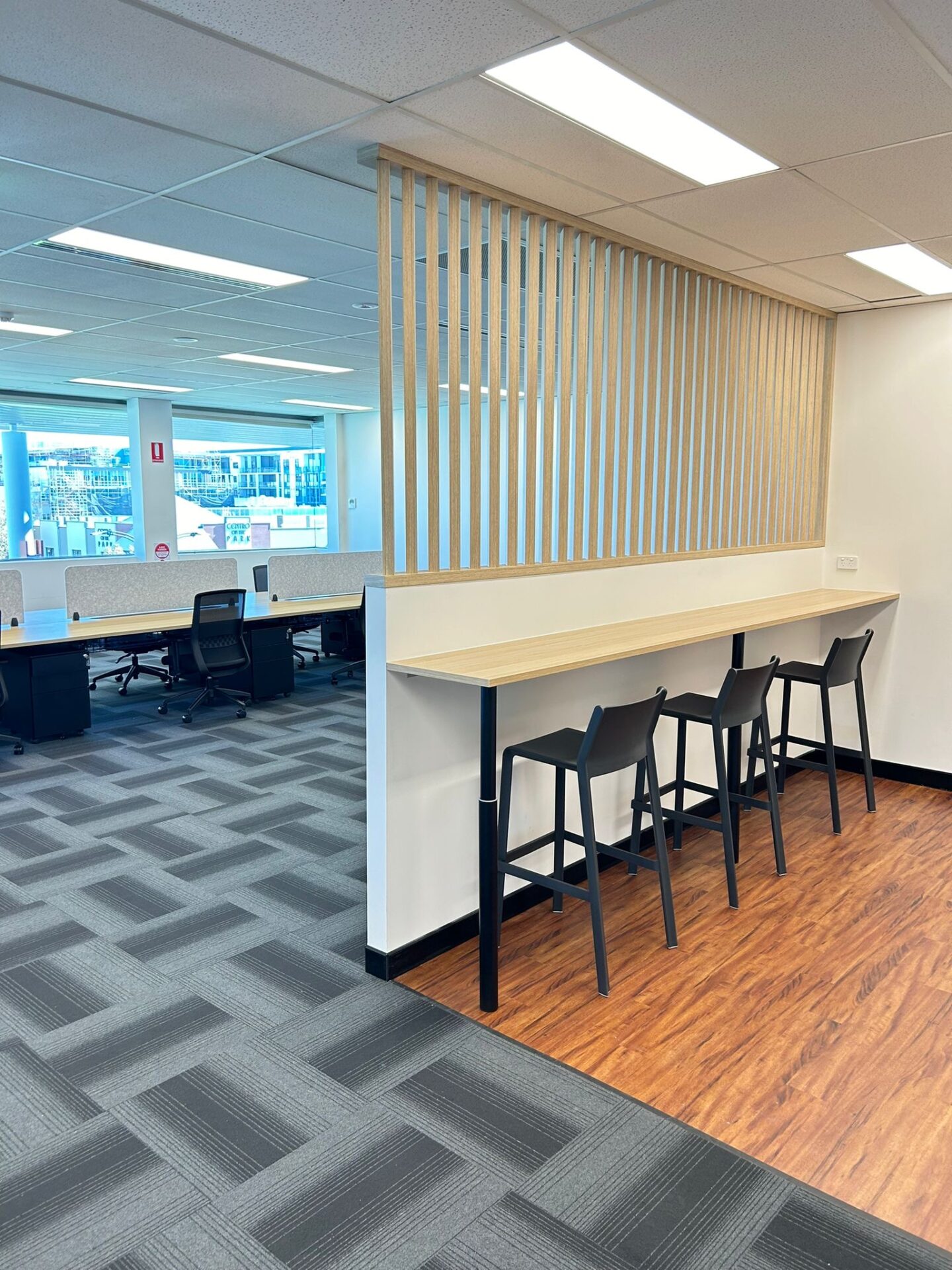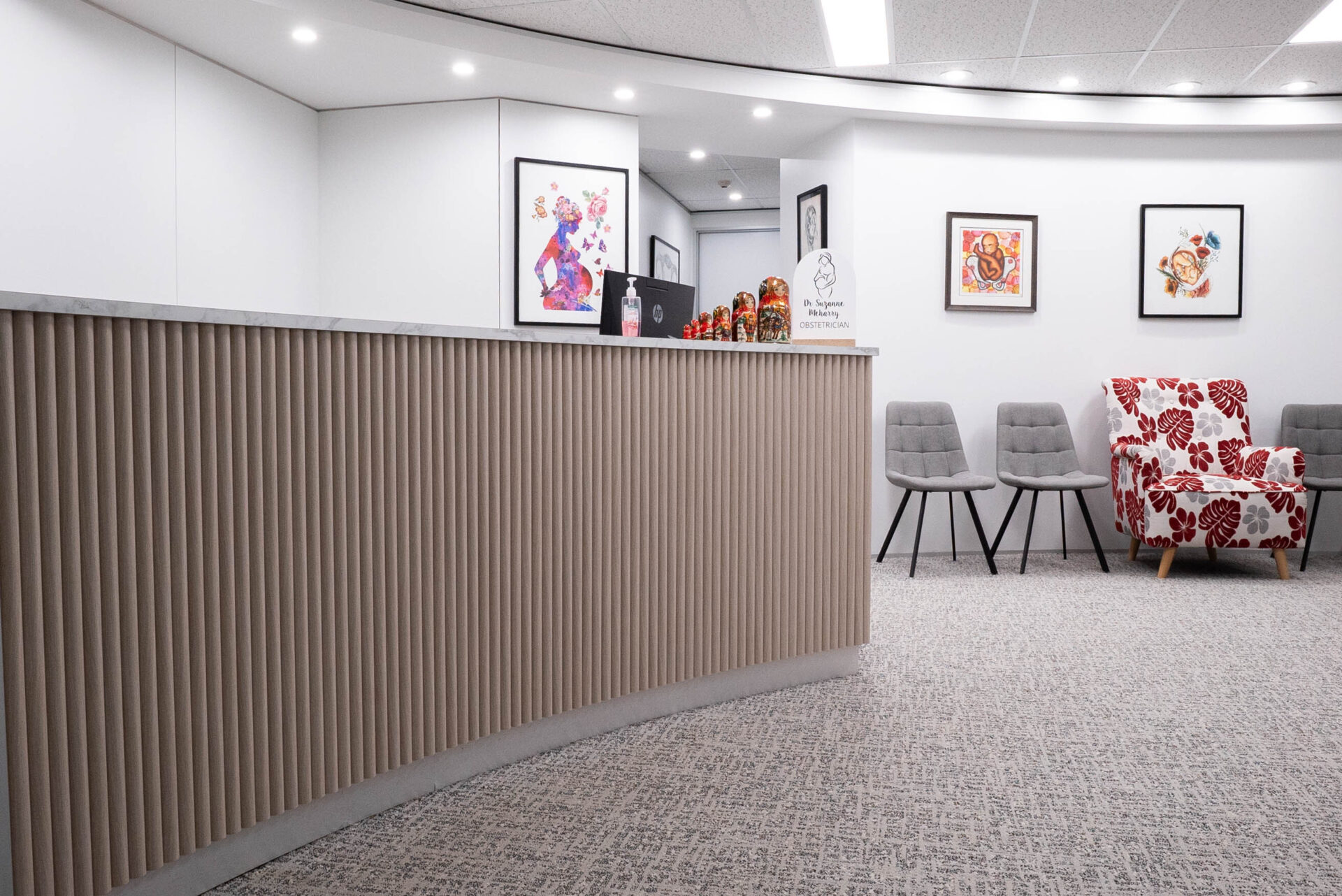How to soundproof an office
Create a calmer, more productive workspace
The dawn of the open plan office in the mid-twentieth century, while revolutionary for enabling better collaboration and transparency, has some well-known downsides. Number one is noise. In fact, with all those modern hard surfaces (read: concrete, steel and glass), many companies need to carefully address the challenge that office noise and distractions can pose to productivity and well-being, in order to create a successful workplace.
According to SoundproofCow, soundproofing an office can improve worker concentration by 48%. Enter products like acoustic panels, ceiling tiles, carpet and soft furnishings. It’s great news, as there is so much you can do! In this article, we will share 15 office soundproofing ideas to reduce unwanted office noise.
What is office soundproofing?

When sound hits a solid surface, it can either be reflected, diffused or absorbed.
Image source: Build
An office is a dynamic environment, with different functions requiring different things, from focused individual tasks to making phone calls to collective brainstorming. And despite a shift to a more hybrid working culture, an employee’s office must provide suitable spaces for both focused and collaborative work.
Integral to acoustic design, which combines the consideration of sound with various elements including office soundproofing methods, there are three basic ways to control the number of soundwaves that bounce around an office:
Reflection – where sound is bounced off a flat, rigid surface with a lot of mass like concrete or brick. This is best used to reflect outside noises from the exterior of a building.
Absorption – where sound is absorbed, such as in carpet underlay, depending on a number of factors like the material’s density and how porous it is.
Diffusion – where an irregular surface, such as carpet or a textured wall hanging, disperses the sound wave in all directions.
What absorbs sound in an office?
Reducing unwanted background noise, or office sound deadening, is the key objective of most office soundproofing strategies. Absorption is the most effective way to do it for mid to high frequencies, such as human chatter. The absorption method uses tried and tested materials to trap noise or unwanted sounds from being reflected around the room, so people can focus and get on with their tasks.
How to soundproof an office: 15 soundproofing strategies
Acoustic absorption
- Wall panels: acoustic panels for offices are available in a number of different materials such as fabric-wrapped timber or fibreglass, foam, perforated wood panels and recycled PET products. designed to absorb sound waves so people can focus.
- Ceiling tiles: acoustic tiles for ceilings are designed to seamlessly integrate into high commercial ceilings through suspended grid systems. Known as cloud panels, baffles and acoustic ceiling tiles, these sound dampening tiles are usually made from fabric-wrapped fibreglass or foam so they remain light.
- Desktop barriers: either freestanding or attached to workstations, these have the added bonus of providing privacy as well as reducing noise and distractions. Most are very flexible and are easy to install and relocate.
Floor coverings
- Carpets and rugs: an exceptional sound absorber is carpet, as it reduces both footsteps and background sound. In commercial settings, carpet tile squares or planks are recommended to break up high traffic harder surfaces such as walkways. Thick pile wool rugs are ideal for reception and break out areas.
- Acoustic underlay: OFP specifies either cushion-backed (recommended for greater soundproofing) or PVC-backed carpet tiles. We always recommend cushion-backed carpets as they are more sound absorbing, soft underfoot and have fantastic green credentials.
- Vinyl flooring: a great choice that absorbs footstep noise and is cost effective, vinyl flooring has come a long way and is now available in cutting edge colours and designs. OFP can also specify acoustic vinyl, which can be invaluable on the top floor of a mezzanine for example.
Room dividers
- High wall partitions: contain the chaos and create separate work zones with padded or high wall partitions such as moveable walls and cubicle partitions.
- Office partition systems: a modern office partitioning system is the first step towards reducing unwanted sound in an open plan layout. Floor to ceiling partition walls are of course the most effective at this and solutions include upgrading to a Gyprock board such as Soundchek for a more effective acoustic result. A product called baffle block can also help eliminate sound travelling through wall partitions. Customised glass partitions can be upgraded to acoustic glass, known as V Lam or Airport glass.
- Private meeting rooms: create meeting rooms with noise dampening insulation and acoustic glass that can also be utilised as designated quiet zones for focused work requiring minimal disruption.
TIP: Maximise soundproofing efforts with strategically placed plants. They work by absorbing sound, reducing echoes and creating living natural barriers, so incorporate these into large areas for both aesthetic appeal and extra sound reduction.
Quieter furniture & furnishings
- Upholstered furniture: with all their extra padding, upholstered furniture is wonderful at absorbing sound compared to hard chairs. Be sure to incorporate soft seating areas not only for reception, but for casual meetings and breaks. OFP stocks a large range, including modular options and high back quiet privacy lounges.
- Textured wall hangings: are a big trend right now and along with cushions, add to the overall noise reduction of a room, particularly in materials such as wool, velvet and heavy cotton.
Doors and window treatments
- Acoustic doors: for meeting rooms, make sure they’re solid core or sound-rated, so everything is working in synergy to achieve the best soundproofing outcome. The addition of drop seals can further enhance the acoustic benefits of a solid core door.
- Window treatments: double glazed windows are a must, which work to reduce sound as well as the heat or cold by using two pieces of glass which are separated by an air gap of at least 12mm. Honeycomb blinds (which trap noise with the cells of the honeycomb structure) and heavy curtains are additional options.
Addressing specific noise sources
- Machine enclosures: section off and isolate noisy equipment such as printers and copiers that can also become a hub of workplace chatter. This will dial down the decibels in the primary work zone.
- Soundproof pods: perfect to combat open-plan distraction is the acoustic or soundproof pod. Akin to telephone booths but way cooler in looks, these have been designed for an employee to make a phone call or take a zoom meeting without distracting others – or having the whole office listening to them.
What are the challenges to soundproofing an office?
While the initial upfront cost of soundproofing an office might be viewed as a challenge, consider it an investment that will come back in spades. Once your workforce operates more efficiently, with fewer day-to-day distractions, your business will reap the rewards of enhanced employee productivity and well-being.
Conclusion
So imagine a workspace where your team can focus, where confidential conversations remain private, and where meetings can be held without disrupting others. Talk to Office Fitout Professionals and let’s find the best soundproofing solutions for your space.
Request a quote today and see how we can help soundproof your surrounds.


